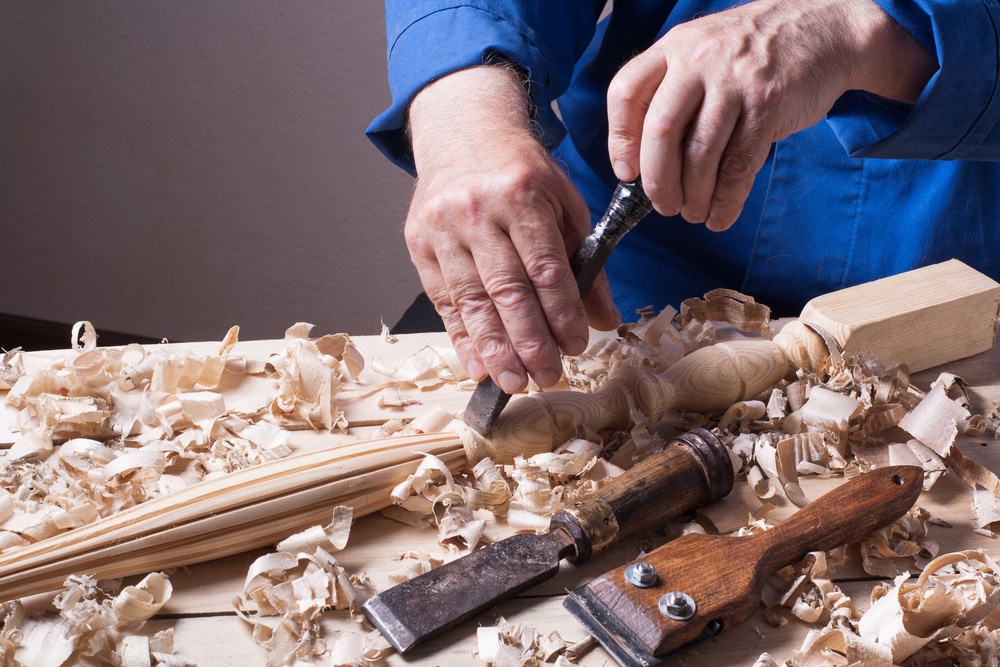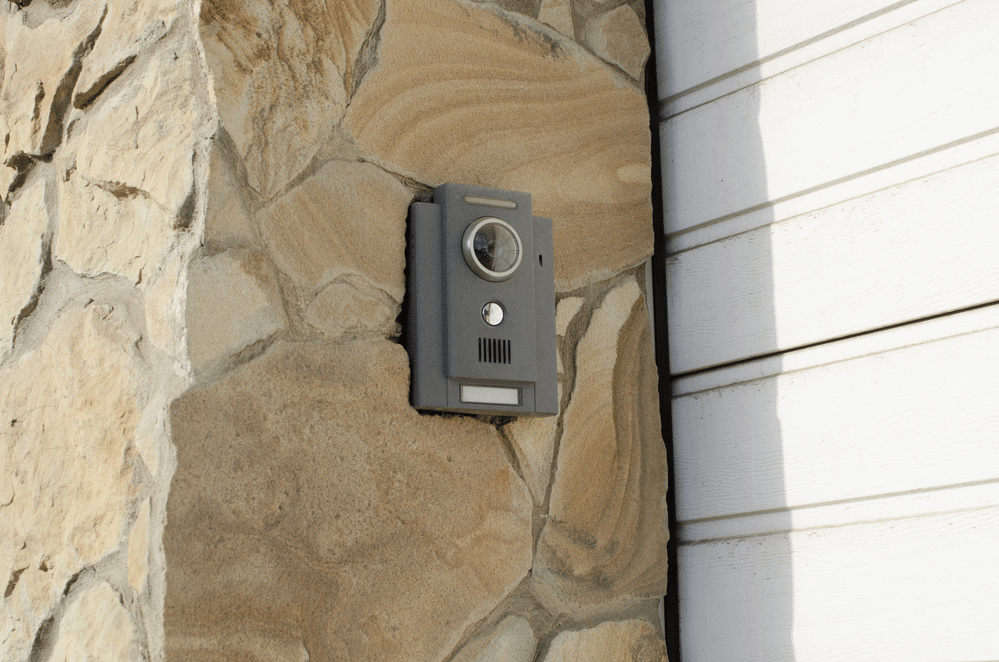Last Updated on
Blunt chisel tools are not quite effective in carving and shaping various wood items. For instance, if your chisel becomes blunt, you will use a lot of force as you are driving it into a wooden surface. Not to mention, a dull chisel might damage wooden items
Instead of carving a piece of wood, a dull chisel cuts through the natural grain of the wood and damages it (a sign of a blunt chisel tool). Today, sharpening chisels has never been easier; various tools can help you sharpen a blunt wood chisel and restore its functionality.
In this article, we will show you how to sharpen a wood chisel so you can avoid unnecessary issues. Let’s dive in.
Items Needed to Sharpen Chisels
I’m so sick of hearing that "lousy craftspeople complain about their tools" chestnut. Give a good carpenter a chipped, dull, chisel, and the first thing they do is turn it into a good chisel by sharpening it. If the chisel is so flawed they can’t sharpen it, they throw it out.
— Allen Holub @allenholub.bsky.social (@allenholub) June 2, 2021
These are some of the items you might require to sharpen a wood chisel in a woodworking sharpening project:
- Fine grit sandpaper
- A firm bench
- Sharpening stones
- Grindstone wheels
- Glass blocks
- Polishing compound
Step By Step Guide On How to Sharpen a Wood Chisel With Sandpaper
Step 1: Attach Sandpaper to a Glass Surface
Now I wanna make a hard sheath for the machete. But first I gotta sharpen this chisel pic.twitter.com/joriQFoqUC
— Jeremy ↙️↙️↙️ (@WishIwasSpock) June 23, 2021
Start off by attaching sandpaper to a glass surface with a strong adhesive. Sandpaper has a coarse surface, which is quite effective in sharpening the edges of wooden chisels. A glass offers you a smooth and flat surface that can hold the sandpaper as you work.
220-grit, 150-grit, and 80-grit sandpaper all work well to sharpen different edges to get a razor-sharp chisel.
Place the piece of glass on the sandpaper, then trace its outline. After that, cut the sandpaper gently, following the line that you traced earlier on. Next, apply some adhesive on the backside of the sandpaper. Place the sandpaper on the glass surface, then squeeze it gently until it sticks to the glass.
Start off by attaching the 50-grit sandpaper to a block of glass. After that, cut the 150-grit sandpaper, following the same procedure that you had used earlier on. Finish off by attaching the 200-grit sandpaper to a glass block.
Step 2: Work On the Underside of the Chisel
While a chisel uses different edges to carve out wood, the underside part also enhances the performance of the chisel. It guides the edge of a chisel in a certain direction, making it easier for you to carve out the wood in a straight line.
No dovetails cut tonight, since I wasted half an hour trying to sharpen a chisel. A2 steel is a mistake. pic.twitter.com/06qGjVhnXY
— Adam (@galooticus) October 24, 2019
To get superb results, you have to work on the underside part of your chisel and make it extra flat through a process known as lapping.
Place the chisel flat on the 220-grit sandpaper. The underside part should be in contact with the sandpaper, while the bevelled edge should be facing upwards. Squeeze it gently on the sandpaper, then move it along the surface in a diagonal direction in a back and forth motion. Repeat the process to get superb results.
Check if the sandpaper has had any effects on the backside of the chisel. If the backside has a few scratches, place it back on the sandpaper, then lap it again. If the scratches cover the whole backside, then you’ve done a good enough job.
Step 3: Adjust the Honing Guide
A chisel comes with angled edges; you have to tilt it as you are sharpening it. A honing guide is a special tool, which tilts the chisel, making it easier for you to sharpen the angled edge. To get superb results as you sharpen a chisel, you have to use a honing guide.
Found a broken old chisel under the counter. Gave it a sharpen on the stone. Hard to capture how sharp it is now pic.twitter.com/oh2dGH3MuF
— Matt Little (@M_TTL_TTL_) March 19, 2016
Move the chisel blade along the guide to adjust the chisel sharpening angle. For instance, if you move the chisel end 30mm from the guide, the honing guide will tilt the chisel at a 30 degrees angle.
Step 4: Sharpen the Chisel
Place the honing guide on the sandpaper in a strategic manner so that the chisel comes into contact with the surface at a 30 degrees angle. Move the chisel along the surface of the sandpaper to sharpen it.
After a certain period, the sandpaper will cause some abrasion on the edge, forming a small ridge on the backside of the chisel. Once the ridge starts to form, you have to flatten it out. The ridge might guide you as you are sharpening the wood chisel, making it easier for you to know if the bevel is sharp enough or not.
The ridge starts to appear on the backside of the chisel when the bevel becomes sharp.
Step 5: Flatten Out the Ridge
Place the backside of the chisel on the sandpaper, just as you had done earlier on. Move the chisel along the sandpaper to eliminate the small ridge that might have formed as you are sharpening it.
Once you are done with this procedure, you can continue sharpening the bevel. Just place the bevel on the sandpaper, then move it along the sandpaper. Make a few strokes on the sandpaper (about five to seven strokes). After that, turn the chisel so that the backside comes into contact with the sandpaper. Move the chisel along with the sandpaper, making the same number of strokes.
Step 6: Polish the Chisel
This procedure can help you sharpen the blade even further and to polish it. To get a sharp edge, keep on sliding the bevel along the surface of fine sandpaper. Hone it continuously until it becomes sharp. Apart from that, a medium polishing compound can also make it easier for you to polish the blade.
Just rub or apply it on a smooth wooden surface, then move the chisel along the wooden surface. Keep on honing it until it starts to resemble a mirror surface. Also, tilt the bevel of the chisel with a honing guide to achieve effective results.
While some chisels might be slightly dull, others may have crooked bevels with different defects. Such chisels cannot be sharpened with sandpaper.
Step By Step Guide On How to Sharpen a Wood Chisel With a Sharpening Stone
Well, different tools can sharpen a wood chisel and restore it back to its previous state, making it sharp again. A sharpening stone is a tool that features a rough, abrasive, and coarse surface that can help you sharpen your chisels. Sharpening stones have different coarseness levels that are ideal for tackling different edges.
These are some of the steps you should follow while sharpening a wood chisel using a stone:
Step 1: Fix the Chisel on a Honing Guide
While new chisels might come with an edge that is bevelled at a 25° angle, you must sharpen it at a 30° angle if it becomes blunt or dull. Slide the wood chisel into the guide; the edge of the wood chisel should be in a parallel position with the frame of the guide. Once you slide the wooden chisel into the guide, adjust the angle by aligning it with the 30° annotation.
Next, fasten the guide’s screws to secure the chisel to the honing guide.
Step 2: Place the Sharpening Stone on a Sturdy Surface
Once you secure your chisel to the honing guide, you have to place the sharpening stone on a strong and steady surface such as a bench or a steel table. It should rest on a flat bench or a steel table surface to minimize any errors.
Students Learn how to grind and sharpen a chisel in the wood shop at LHS. pic.twitter.com/caDwDtDyf3
— Tom Ciccarello (@LHS_TCiccarello) October 7, 2016
Step 3: Sharpen Your Wood Chisel
To get effective results, you should use stones that have different grits. Start off by using a heavy grit stone, then move to a fine grit stone. If you use an oil stone, you have to oil the stone first before you use it to sharpen your chisel. Place the bevelled edge tip on the surface of the stone, then use the honing guide to position the blade at a 30° angle to the stone. The chisel should rest on the stone at a 30° angle. Slide the blade along the stone’s surface in a back and forth motion to sharpen it. Afterwards, repeat the same procedure about 10 – 12 times.
Step 4: Sharpen It on a Finer Grit Surface
Next, flip the sharpening stone. The other side of the sharpening stone is usually the fine-grit section. Oil the whole section before you start sharpening. Slide the blade along that section, following the same technique you had used earlier on.
yeah…seems like a good time to stay at shop and sharpen a chisel 😒 pic.twitter.com/8TYYCS7dX7
— SE Lock and Key (@fondrenlock) April 18, 2017
Step 5: Get Rid Of the Burr
Afterwards, dismount the chisel from the guide. Get rid of the metal burr that might be on the chisel with a simple piece of wood.
Start Sharpening Your Wood Chisel
To get effective results while cutting and carving wood, you have to sharpen this woodworking tool regularly. Honing chisels, whether it be with a stone or a chisel grinder, is a simple process. Since there are different methods of sharpening the chisel, you can choose the one that suits you the most.
How do you sharpen your chisels? Let us know in the comments.
Ian loves everything that revolves around the home improvement niche. He loves trying out new home appliances. He has also handled a lot of equipment and has a lot of insight. Plus, he’s worked on various home improvement projects that became a success.
If Ian isn’t busy working on his latest project, you can find him reading up about another one!



